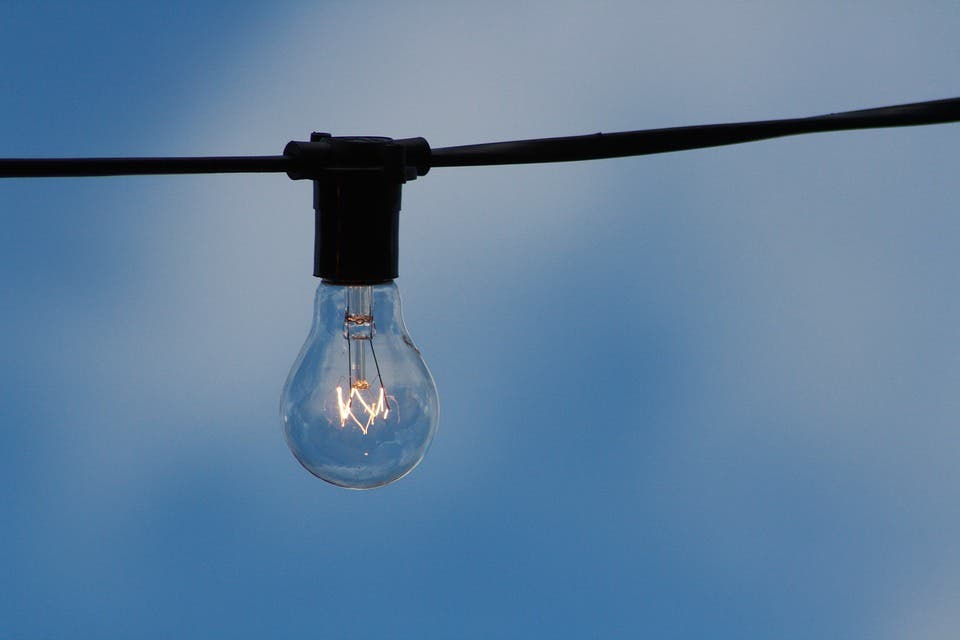Society as we know it today couldn’t exist without energy. If you boil everything down, energy directly translates to how much we can shape the world around us into the things we want and need — houses, food, warmth, ZMEScience.
Throughout our history, we got this energy by burning stuff — first it was food in our muscles, followed by firewood, and modern times dawned with the burning of fossil fuels, then atoms. This way of going about it wasn’t such an issue while humanity used a little energy overall and the environment could absorb both the byproducts and our limited ability to alter it.
But today we churn out a lot of energy. There has been a huge growth in the amount of energy we can bring to bear towards this goal of crafting a cozy world for ourselves, and our effects and emissions scale accordingly. Natural systems today are left weakened by millennia of human exploitation, and all over the world they’re buckling under the pressure we place on them today — which, according to our needs and energy generation potential, is greater than ever. These systems can’t come anywhere near scrubbing all the CO2 our pursuit of energy releases, and they can’t regenerate because we take out more and more from them.
We’re already seeing the effects in the shape of climate change and environmental breakdown. We’re living better than ever before — but doing so at the expense of everything else on the planet.
This needs to change
The matter of fact is that we can’t go back to how things were. The industrial revolution changed our society drastically, and it was made possible by an energy revolution. We need a lot of goods today, on a level only mass producing on assembly lines can supply. We simply can’t make enough medicine, clothes, or any other type of goods, by hand, for everyone. But hypothetically, even if we all decided to tighten the collective belt, forgo the comforts of modern life and go back to pre-industrial levels of energy use, we couldn’t do it. And food illustrates best why.
The sprawling cities of today depend on foodstuffs being shuttled in to feed their inhabitants. But without factories, we wouldn’t have any fuel or spare parts. Which means there will be no equipment to till soils, only oxen and plows, no pumps for irrigation, no industrial fertilizers — just good old fashioned back-breaking work. We could fish or hunt, but only with ships and tools you can build by hand and which don’t use engines. Considering how depleted natural stocks of game and fish are today, this way of doing things would probably net us fewer calories than we’d put into it.
Overall, de-industrialization would translate into an immense drop in food production. Going down this line of thought, we’d have no way to transport our limited food from farms to market beyond what a human or pack animal could carry, no cement to make proper roads, and only a limited capacity to quarry stone to build half-proper roads.

It keeps going on like this. So, could we do it? Back in 2009, Jon Bosak of TCLocal looked at one question:
“If New York State produced what it did a hundred years ago, before the arrival of gasoline- and diesel-fueled equipment, could it feed its present population?”
Apart from his own not-exactly-exact but still illustrative calculations, Bosak draws heavily on two papers published by J. Peters et al. in the journal Renewable Agriculture and Food Systems between 2006 and 2008. His conclusion can be best summed up as ‘no’, even when considering “that we still had substantially more arable land than we actually do now” and that “the vastly greater resources of animal power available a hundred years ago” would still be available today.
The first of Peters’ papers take a more thorough approach looking at how dietary choices impact the carrying capacity of New York State, finding that it could support around 30% of its current population with radical changes in diet, and just 21% of its current population on a “balanced diet” (which still requires significant changes in diet) with the full means available today. The second one reinforces the findings of the first in broad lines, while also showing that NYS could theoretically reduce the farm-to-consumer distance far below its current average of 1300 miles (2100 km), but fully supplying its population with food would still require shuttling goods over great distances — which, in the absence of mechanical means, may not be feasible since food tends to spoil.
That’s not taking into account how the lack of goods, electricity, running water, and a myriad of other things we take for granted but require constant power to operate would impact society, production, transport, and communications. People would eventually stabilize into agricultural groups in farms and some actually impressive cities, maybe. But no power — no internet, no phones so you can’t order takeout. Light switches would basically be stress relievers and there’d be no running water. At the same time, we know that a business as usual model basically takes us the same way, so we need to make some changes.
Now that we have our “why,” let’s look at the “how”.
Clean sources of power
The lion’s share of the problem lies in how we source that power. Much attention has been brought to fossil fuels and greenhouse emissions lately as the effects of climate change become more wide-spread and more pressing. But even if these resources weren’t as dirty as they are they would still be finite, meaning we’d have to shift away from them at one point or face those problems we’ve talked about earlier.
It’s on our governments to fully detach industry from fossil fuels. Other stuff like electric cars or wind farms fall on the shoulders of the industry. But there are things each of us can do to make the world a little bit greener, one tiny step at a time. Here’re a few of the going-ons in the field of renewable energy which could power home without burning anything.
Solar
Solar energy has gained huge popularity with domestic users because it scales down really well, it’s relatively cheap to install and easy to maintain. It can also generate a lot of power — if you want to get a rough estimate of how well solar would work for you, Google can help. Some countries also offer compensation for any extra energy that consumers pour into the grid, meaning you can make a little money on the side. It’s also ideal for the tiny anarchist in you — solar panels only need a bit of sun to churn out energy, meaning you can bolt some on your car or even carry them around with you and have power wherever it’s sunny.
Sounds good? I know. Here’s how you can incorporate solar in your home:
Among other things they dabble in, Tesla is a big promoter of solar energy. Since merging with SolarCity last year, it has announced that their Solar Roof will power your home with clean energy and be cheaper than the average roof. Musk says the company can deliver at a lower price because the current roofing supply chain is “incredibly inefficient”.
They’ve also made huge progress in battery technology, which would allow the system to store power whenever the sun shines and keep waste to a minimum.
“The roof would be integrated with Tesla’s house battery system, allowing the roof to store energy for a longer time,” Andrei wrote about the system last year.
An alternative to Tesla’s tech are the inconspicuous solar panels that startup Sistine Solar has developed. These panels can display whatever color or image you want — so you can install them on your roof to match the tiles or use them to display an ad or logo at your business. They bring the benefits of regular solar panels while keeping your advertising/decorating space unaffected.
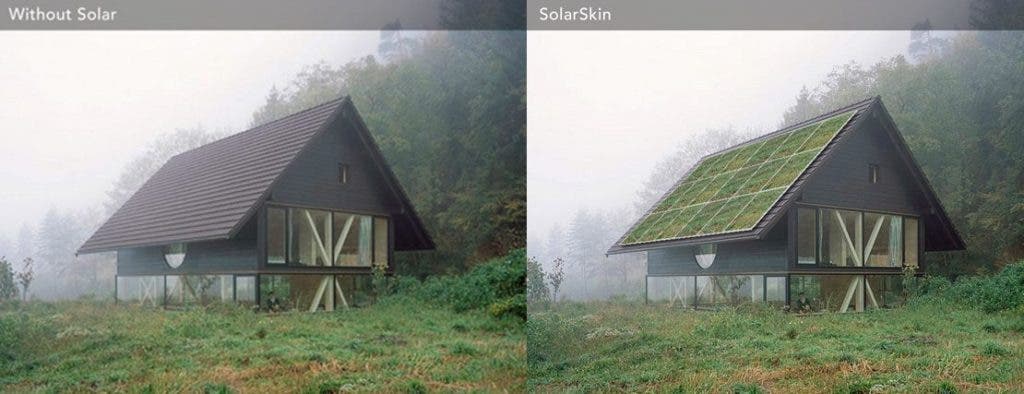
If your crib somehow lacks roofing, fret not. We’ve also talked with Solar Window CEO John Conklin about their proprietary coating which can turn windows and other transparent surfaces into power-producing panels — churning out energy even from ambient or artificial light. The product isn’t commercially available just yet, but Conklin wants it to be something everyone can use.
“SolarWindow doesn’t rely on direct sunlight like normal PV does. Any coated side of the two buildings will generate electricity even just from diffused light,” he said.
“We don’t want this to be something only for the rich and powerful,” John said. “[SolarWindow] works with natural or artificial light so it’s not just sunlight. All that light coming from your fixtures, for example, can be used to generate power.”
These windows can be installed at home to produce some power, but they truly shine on larger surfaces where they can capture a lot of light. Still, between them, these technologies could provide for all your energy needs at least during the sunny parts of the year.
Wind
Wind applications aren’t the best for small users because they usually cost a lot of money up front. They also usually require large blades and are relatively maintenance heavy, since there are a lot of moving parts. For these reasons, wind power is most often employed in medium-large scale applications, such as the Dutch’s iconic windmills to sprawling wind farms which can power whole cities.
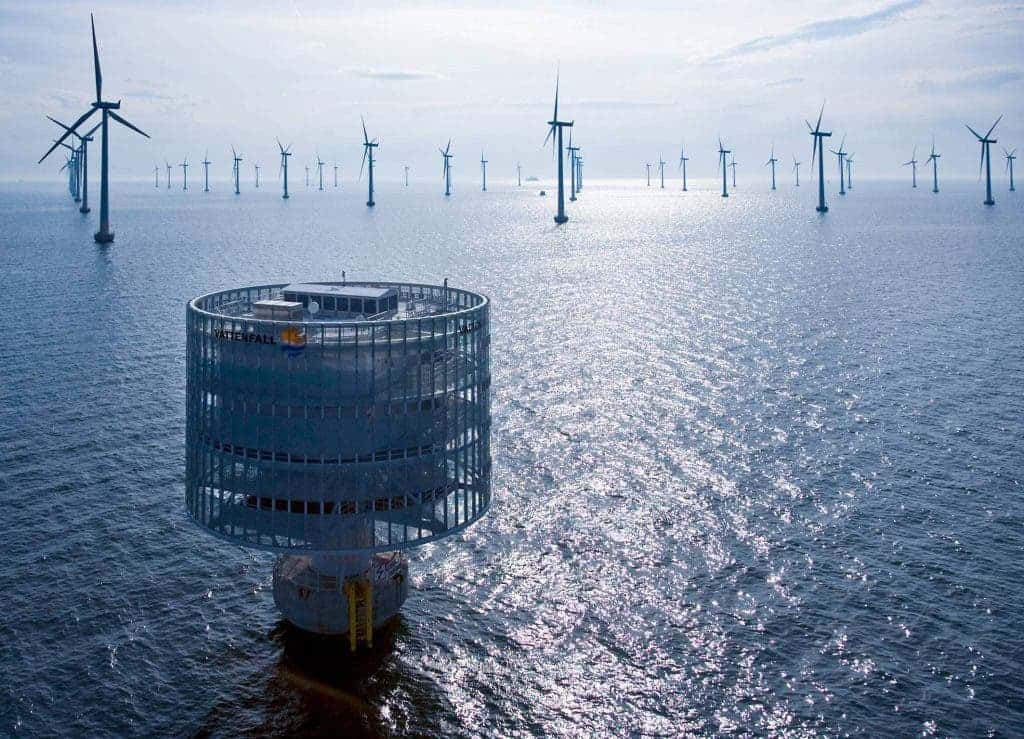
Still, they do have a number of advantages. For starters, wind can potentially work around the clock, unlike solar which is obviously limited to daylight hours. A turbine typically churns out more power than a single panel and wind works really well to complement solar in temperate areas or replace it altogether in cold or windy regions. However, because of their price tag wind generators would be more attractive to communities rather than individuals or families.
But if you have around US$23,000 burning a hole in your pocket, the Wind Tree will keep the lights burning with artistic grace — and very silently. One major advantage of the Tree over other wind-harvesting methods is that it can work with wind speeds as low as 2 m/s, so it will “be active more than 280 days of the year, with a predicted power output of 3.1 kW,” Andrei explained.
“The steel tree stands 11 m (36 ft) tall and measures 8 m (26 ft) in diameter and the operation is completely silent. New Wind also believe that the trees could be hooked up to buildings via the main switchboard or connected to the grid with an inverter,” he adds.
Spanish startup Vortex Bladeless have also demonstrated an “asparagus” turbine that turns oscillating movements into electrical energy. The company boasted that its Vortex Mini costs only half what a conventional turbine would, required little to no maintenance since there were few moving parts, and is totally silent. It also looks cool. While the Vortex is limited in how much power it can generate (30% less than conventional systems), it can function in average wind speeds of between 3-15 m/s.
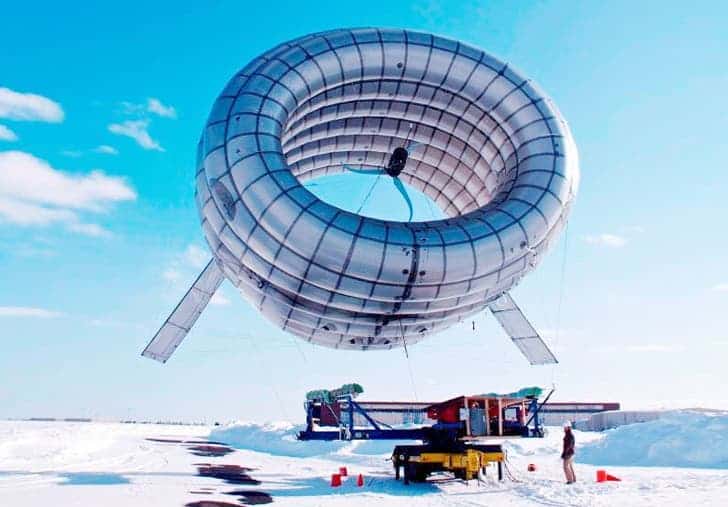
If you dream of taking a merry band of friends and living it out off-grid, the Altaeros BAT (buoyant air turbine) might be just the focal point your little community will band together — primarily to charge their phones. This flying wind turbine is designed to float up into the more powerful winds at higher altitude (about 1,000 feet) for up to 18 months at a time, potentially allowing it to produce more power than its land-locked counterparts.
There are three reasons why I’d primarily suggest the Altaeros to a community rather than an individual consumer. The first is the fact that it can produce way more energy than one single family needs. Secondly, it was designed primarily with isolated communities and disaster relief in mind, and you can get a lot of utility out of this thing.
“Besides generating power, these floating power plants can provide data coverage, cell service and local weather data and can be deployed in harsh weather conditions, so they serve multiple purposes,” Tibi explained.
But there’s also a caveat. The Altaeros is basically a fancy blimp. I haven’t been able to find any definitive numbers on its price but it stands to reason that manufacturing and installing the Altaeros would be cheaper than a regular turbine. Here comes the third reason, however: with a regular turbine, you can plop it down and it will produce power for 15, 20, maybe 25 years with maintenance. The BAT, on the other hand, has a hard cap of 18 months after it needs to to be refilled with helium in the best case scenario, where there’s no damage or leaking. The price of helium, however, has been rising steadily, although this is always subject to change based on the market. Altogether, this means the BAT should cost less up front but produce a ‘more expensive’ kilowatt-hour as it has higher running and maintenance costs compared to regular turbines.
Heat
Heat (in the form of temperature) is annoying because nature never gets it just right — there’s either too much or too little of it and it’s always changing. So the issue of heat has to be approached from a few angles: heating (getting more heat), cooling (getting rid of heat), insulating (holding onto the heat you have) and transforming waste heat into other useful energy types.
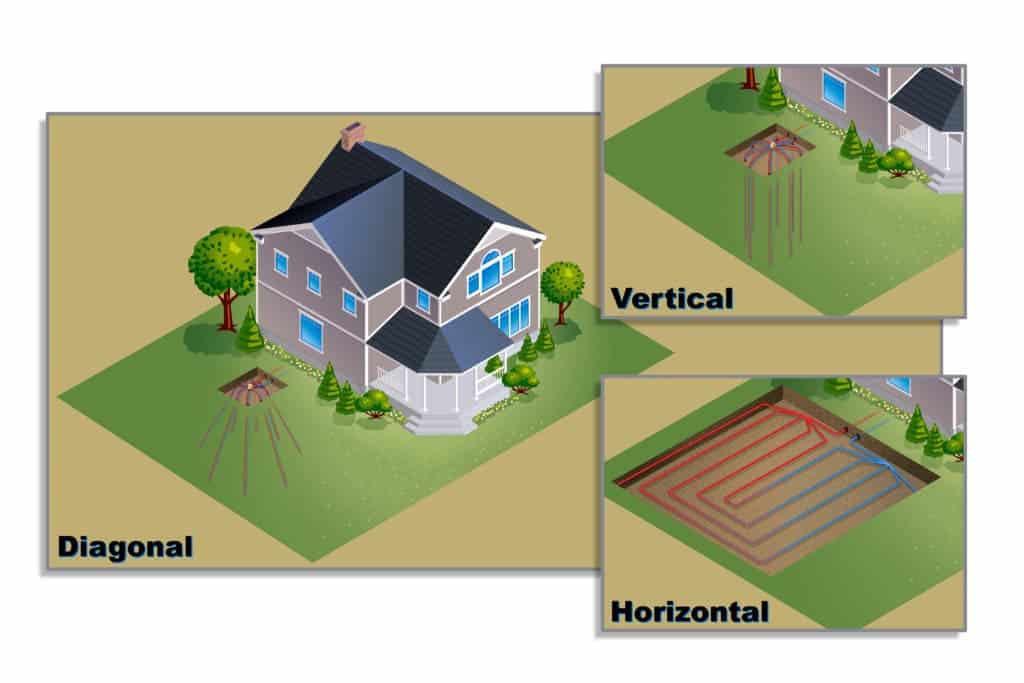
Geothermal is an awesome way to cover both heating and, in the case of very hot reservoirs, energy generation. It basically consists of drilling pipes deep into the ground and pumping water through them, which will come back up nice and hot. This is probably the most conventional and widest-used heat-based method of energy generation, but it (usually) suffers from pretty big upfront costs (since digging the wells is expensive) and it’s highly dependent on local geology, so it may not be implementable everywhere. On the upside, it’s almost maintenance-free and will generate a lot of power to keep your home or greenhouse warm and supplied with ample bathwater throughout the year.
One really cool thing Paris-based architect Stéphane Malka did to insulate an old residential building in the French capital was to cover it in “parasitc cubes” made of wood. These were mounted onto the structure to create a beautiful, blocky, comb-like facade which was further decorated with plants. The wooden parasites reduced the total energy expenditure on heating to almost a quarter, from 190KWh/sq. meter to 45KWh/sq. meter. It also extended “useful space horizontally through openings in the exterior” to boot.
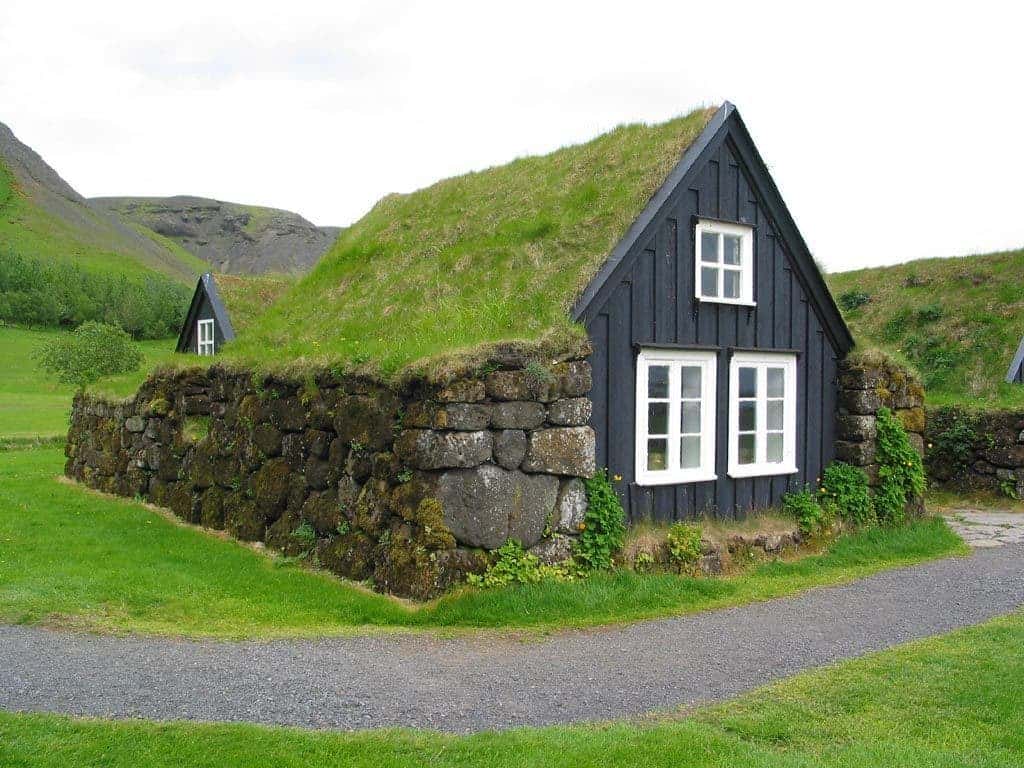
Image via Jeff and Terry.
Icelandic turf house design also makes for very well insulated buildings. Although the huts were designed from the ground up to maximize insulation, since Iceland can be a dreadfully cold place, you probably live somewhere warmer so even a modest turfing of your house’s walls will help keep the cold out. On the bright side, this type of house is literally dirt-cheap so if you’ve ever planned on building a vacation home but never got the money together, now’s your chance.
Ok so now you have all this heat on your hands, what can you do with it? Well, you could use it to power your fridge. One team of researchers from the Department of Prime Mover Engineering at the Tokai University in Hiratsuka, Japan, have developed a thermoacoustic engine which harnesses waste heat to cool things down. This ‘sound wave refrigerator’ can turn waste heat from 270 degrees C (518 F) upward into loud sound waves at resonant frequencies to compress gasses, cooling them down to a maximum of -107.4 C (-161.3 F).
If you live in a place where the summers are really warm and you miss all that heat during the winter, you’ll be glad to find out that Swiss engineers have put together a way you can pickle heat. The method relies on a concentrated sodium hydroxide (NaOH) solution which releases a lot of heat when it comes in contact with water. So you tap into the compound’s stored chemical energy during the cold months, and when summer comes around you leave the (now watered down) solution out in the sun to dry.
“This substance can be stored for several months, even years, between uses. And tanks of the stuff can be shuttled wherever they’re needed.”
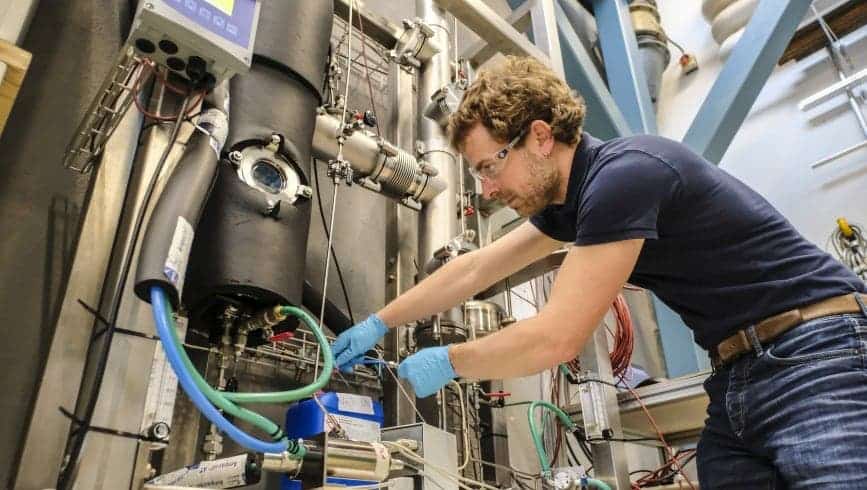
Image credits EMPA.
Effectively, this allows you to ‘store’ the sun’s energy as heat for use whenever you need it. Currently still in the prototype phase, EMPA (the Swiss Federal Laboratories for Materials Testing and Research) is looking to create a compact version of the system for domestic use.
And in case your home is just too warm, a team of the engineers from Stanford University in Palo Alto has just the way to cool you down while expending zero energy — reflective roofs.
“[The team] placed a surface made up of seven layers alternating between silicon dioxide (SiO2) and hafnium dioxide (HfO2) onto a silicon wafer. At the very top, a thin silver coating was applied to act as a first line of reflection. The first four ultra thin layers of SiO2 and HfO2 reflect nearly all the rest of the energy that wasn’t reflected in the first place by the silver layer.” Tibi explained.
“Together, this stack reflects 97% of incoming radiation. The bottom three layers – two thicker SiO2 layers separated by a thick HfO2 layer – absorbed heat from below and radiated it.”
“When tested, even during full sunlight, the coating cooled surfaces below it by 5 degrees Celsius.”
You’ll be glad to hear that while not as effective, painting your roof white will also help alleviate a scorching day’s heat. Given that air conditioning accounts for 15% of all electricity consumed in the US, I’d say this is a pretty good place to start — cheap, simple, and huge stacking potential.
That’s our list of home energy improvements to keep an eye out for. Some of these are commercially available right now, others are almost there, and a few still need some polish. But if you’re looking to become energy self-sufficient and do your part in decarbonising our economies, they’re a good place to start.
